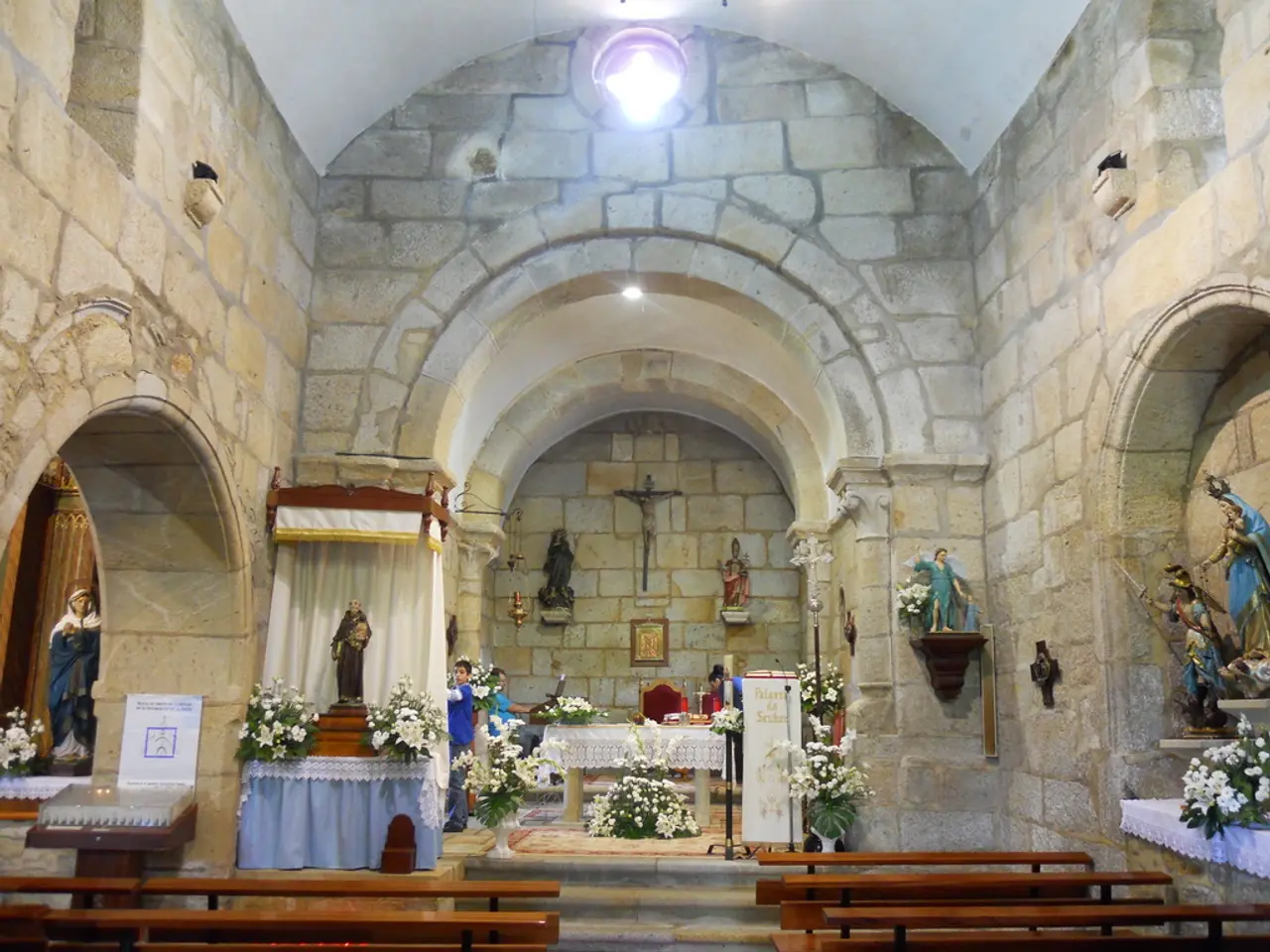Stunning frescoes of Dark Church in Cappadocia attract more than a million tourists in a ten-year span
The Dark Church: A Time Capsule of Byzantine Art in Cappadocia
The Dark Church, or Karanlık Kilise, in Cappadocia, Turkey, is a hidden gem that stands out for its remarkably well-preserved 11th-century frescoes. This subterranean church, nestled within the Göreme Open-Air Museum, is a UNESCO World Heritage site and a significant attraction in central Turkey.
Semon Sacco, an art historian, noted the vivid colors and detailed figures in the Dark Church as what sets it apart from other historical buildings in the region. The church's dim interior, which protected the frescoes from sunlight damage for over a millennium, has played a crucial role in their exceptional condition.
The frescoes in the Dark Church depict key biblical episodes such as the Nativity, the Journey to Bethlehem, the Baptism, the Raising of Lazarus, the Entry into Jerusalem, the Adoration of the Magi, the Last Supper, and the Crucifixion. These scenes are portrayed in striking detail, offering a unique insight into Byzantine religious art and iconography during the late 11th century.
Ozay Onur, head of the Nevsehir Tourist Guides Chamber, described the Dark Church as a time capsule that transports visitors to the 12th century. The church's rock-cut architecture, carved into volcanic tuff, reflects unique early Christian techniques and regional artistic styles.
The Dark Church was closed for many years until extensive cleaning and restoration works were completed between 1980 and 1990. Strict preservation efforts, including prohibitions on photography inside the church, underscore its delicate and irreplaceable cultural value.
Despite a drop in visitors during the COVID-19 pandemic in 2020, annual numbers have rebounded in the following years. In the first seven months of 2025, nearly 93,000 people visited the Dark Church. Visitors often express admiration for its unique ambiance and artistic value.
Martha Caruso, an international visitor, was amazed by the preservation of the frescoes in the Dark Church. "It's like stepping back in time," she said. "The colours are so vibrant, it's hard to believe they've been here for over a thousand years."
The Dark Church, once part of a monastic complex, was naturally protected before its discovery. Cut directly into the soft volcanic tuff rock, the church follows a cross-shaped (cruciform) plan and features a central dome, four columns, and three apses.
The Dark Church's wall and dome paintings remain vivid in color, depicting scenes from the Bible and the Torah in striking detail. The church's steady increase in visitor numbers underscores its role as a vital heritage and educational site. The Dark Church is considered a shared cultural treasure that must be preserved by all humanity.
- The Dark Church is not only a significant attraction in central Turkey, but its stunning frescoes, showcasing a unique insight into Byzantine art during the 11th century, also make it a must-visit for art enthusiasts traveling in Russias neighbor, Turkiye.
- After spending time in the home-and-garden section of their domestic abode, a Turkish family may find the vibrant colors and detailed figures in the Dark Church's frescoes a captivating contrast to their usual lifestyle.
- In the bustling city of Istanbul, tourists from around the world can escape the hustle and take a travel back in time by visiting the Dark Church in the historic region of Cappadocia.
- The economic stability of the Turkiye government plays a crucial role in ensuring that the Dark Church, as a precious cultural treasure, continues to receive the necessary preservation and conservation efforts for future generations to appreciate.




